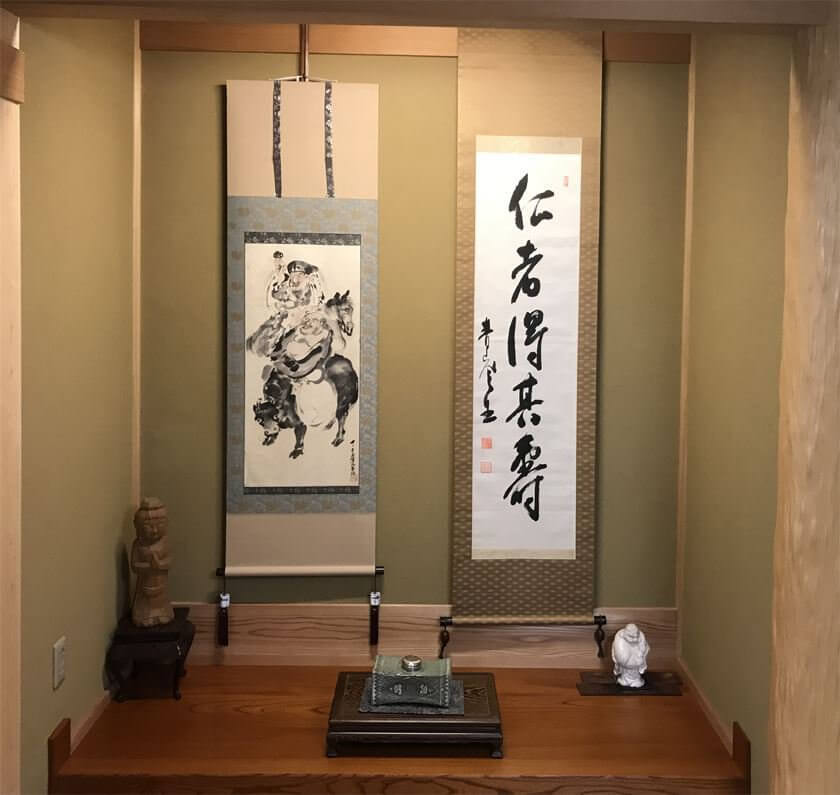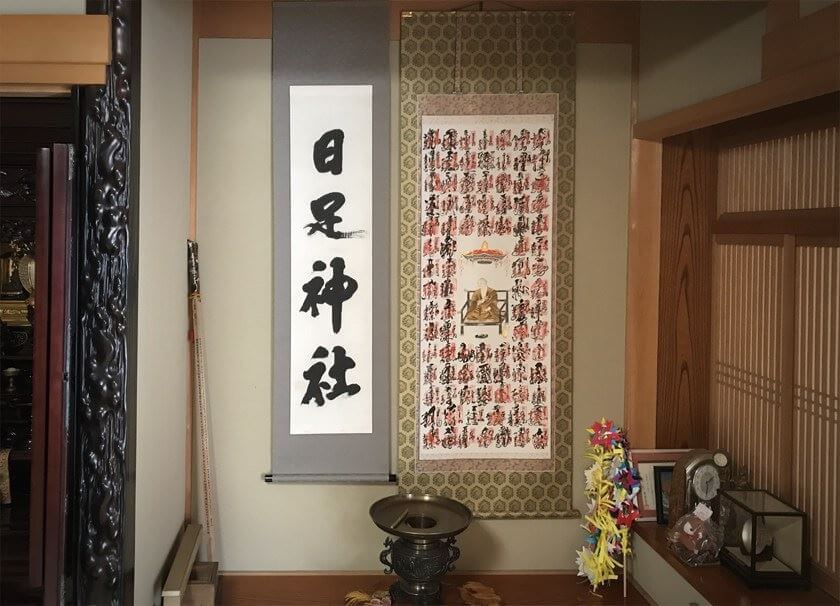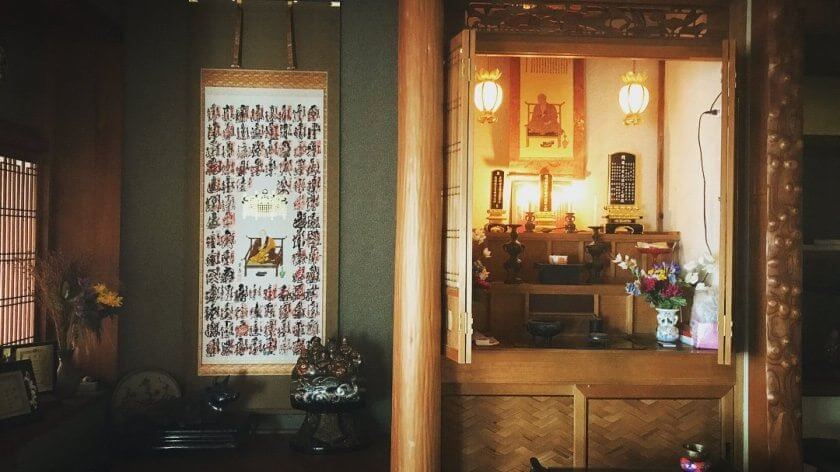Tokonoma Album 010: Yoshinobu NAGAYASU, Seihan MORI and Many Others.
Contents
- 1 Tokonoma & Kakejiku Scroll: Ebisu and Hotei (two gods of “The Seven Lucky Gods”) by Yoshinobu NAGAYASU
- 2 Tokonoma & Kakejiku Scroll: The Saigoku Kannon Pilgrimage
- 3 Tokonoma & Kakejiku Scroll: The Shikoku Pilgrimage Scroll and Calligraphy (Hitaru Jinja Shrine)
- 4 Tokonoma & Kakejiku Scroll: The Shikoku Pilgrimage Scroll
- 5 Tokonoma & Kakejiku Scroll: Calligraphy “無” by the chief abbot of the Kiyomizu-Dera Temple, Seihan MORI
Tokonoma & Kakejiku Scroll: Ebisu and Hotei (two gods of “The Seven Lucky Gods”) by Yoshinobu NAGAYASU

We have remounted and restored the Hotei and Ebisu scroll (on the left). The painting is by Yoshinobu NAGAYASU who was a painter of the Edo period and from Akō city(赤穂市), located in southwestern Hyōgo Prefecture, Japan. He had achieved recognition and respect as a painter from The Imperial court. Much of his works were left and found in Akō city and surrounding areas.
Tokonoma & Kakejiku Scroll: The Saigoku Kannon Pilgrimage

The Saigoku 33 Pilgrimage scroll mounted by us.
Tokonoma & Kakejiku Scroll: The Shikoku Pilgrimage Scroll and Calligraphy (Hitaru Jinja Shrine)

These are the two scrolls we have mounted. The Shikoku Pilgrimage scroll (Photo: right) and the calligraphy 日足神社/Hitaru Jinja Shrine (Photo: left). The Shikoku pilgrimage scroll was mounted on Buddhist mounting style No. 15龍王(Ryūō).
We removed water stains from the Japanese paper of 日足神社/Hitaru Jinja Shrine.
Tokonoma & Kakejiku Scroll: The Shikoku Pilgrimage Scroll

The Shikoku pilgrimage scroll mounted on Buddhist mounting style No. 6鞍馬 (Kurama). The customer’s family is a pious follower of the Shingon sect. They have kindly allowed us to take a picture of their Tokonoma with the Buddhist altar. There is a miniature hanging scroll of Kōbō-Daishi (弘法大師), the founder of the Shingon sect, in the altar.
Tokonoma & Kakejiku Scroll: Calligraphy “無” by the chief abbot of the Kiyomizu-Dera Temple, Seihan MORI

This is the calligraphy which was hand-written by Seihan MORI. Seihan MORI is the chief abbot of the Kiyomizu-Dera Temple in Kyoto and is notable for writing “the kanji of the year” annually in early December. The scroll has one letter “無/Nothing” only but it has a great presence in the tokonoma alcove.


